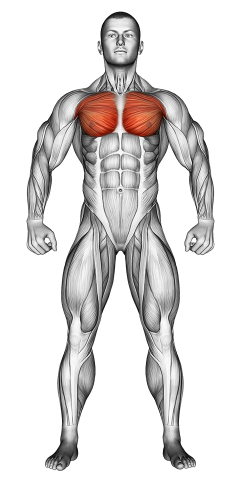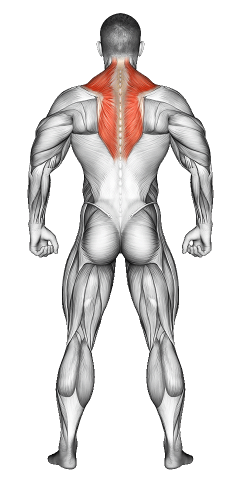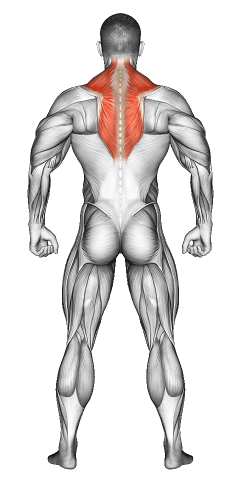Seated Chest Stretch: Video Tutorial & Stretch Guide

Written By: Claude Michael
Updated: Dec 18, 2024
| Workout | Seated Chest Stretch |
| Primary Muscle Group | Chest |
| Secondary Muscle Group | Shoulders, Traps |
| Equipment Required | Bench or sturdy chair |
| Force Type | Static Stretch |
| Mechanics | Isolation |
| Exercise Type | Flexibility and Mobility |
| Difficulty | Beginner |
Seated Chest Stretch: Video Tutorial & Stretch Guide
- 1.Seated Chest Stretch: Muscle Groups
- -1.1Primary Muscle Group
- -1.2Secondary Muscle Group
- 2.Seated Chest Stretch: Step-by-Step Guide
- 3.Seated Chest Stretch: Overview
- 4.Seated Chest Stretch: Benefits
- 5.Seated Chest Stretch: Pro Tips & Advanced Techniques
- 6.Seated Chest Stretch: Progression Plan
- 7.Seated Chest Stretch: Frequently Asked Questions (FAQs)
Seated Chest Stretch: Step-by-Step Guide
- Step 1: Sit tall on a sturdy bench or chair. Plant your feet firmly on the ground. Place your hands behind you on the edge of the seat, fingers pointing away from your body. This setup opens your chest and gets you ready for the stretch.
- Step 2: Straighten your arms gently and lift your chest forward. Feel the stretch across your chest and the front of your shoulders. Keep your back straight and your shoulders down. Avoid lifting your shoulders toward your ears.
- Step 3: Hold this position for 15-30 seconds. Breathe deeply. With each breath, relax into the stretch a bit more. Don’t bounce or force the movement—keep it smooth and controlled.
- Step 4: Return to a neutral position by slowly bringing your chest back. Release your hands from behind you. Pause here and notice how your chest and shoulders feel more open.
- Step 5: Repeat the stretch 2-3 times. Focus on good form and steady breathing each time. This repetition improves flexibility over time and keeps your chest and shoulders mobile.
Seated Chest Stretch: Overview
The Seated Chest Stretch boosts flexibility across your chest and shoulders. It’s perfect for relaxing tight muscles after an upper body workout or after long hours sitting. This simple, beginner-friendly stretch aligns your shoulders and opens up your chest, supporting good posture and upper body mobility.
Seated Chest Stretch: Benefits
The Seated Chest Stretch works beyond flexibility—it reduces tightness in your chest and shoulders. By stretching here, you help your posture, prevent injuries, and improve your upper body range of motion. Add this stretch to your cooldown or daily routine to keep your chest and shoulders relaxed and mobile.
Seated Chest Stretch: Pro Tips & Advanced Techniques
- Keep Your Posture Tall: Keep your shoulders down and back to maximize the stretch. Avoid any hunching forward.
- Use Deep Breaths: Take slow, deep breaths to stay relaxed. Inhale deeply, and as you exhale, gently press your chest forward to deepen the stretch.
- Go Slowly and Controlled: Skip any bouncing or jerking. Move smoothly to let your chest muscles fully release.
- Increase Range Gradually: Over time, try placing your hands a bit further back to get a deeper stretch across your chest.
Seated Chest Stretch: Progression Plan
Beginner
Intermediate
Advanced
Seated Chest Stretch: Frequently Asked Questions (FAQs)
What muscles does the Seated Chest Stretch work?
+It stretches your chest, shoulders, and upper back, helping you release tension and increase flexibility here.
Can I add the Seated Chest Stretch to any workout?
+Yes! This stretch fits perfectly in any upper body workout or cooldown routine. Use it to relax your chest and shoulders.
Does the Seated Chest Stretch help with posture?
+Definitely. This stretch opens up your chest and aligns your shoulders, helping to improve your posture over time.
How often should I do the Seated Chest Stretch?
+Add it to your routine 3-4 times a week, especially if you sit a lot or focus on upper body exercises.
What mistakes should I avoid?
+Don’t hunch your shoulders or rush the stretch. Keep your movements smooth and controlled, and breathe deeply to get the most benefit from each stretch.
Share
Don’t Wish for It, Work for It – Join the FlexXP Newsletter Today!
Thank you for signing up for the FlexXP Newsletter!
This site is protected and the Google Privacy Policy and Terms of Service apply.


